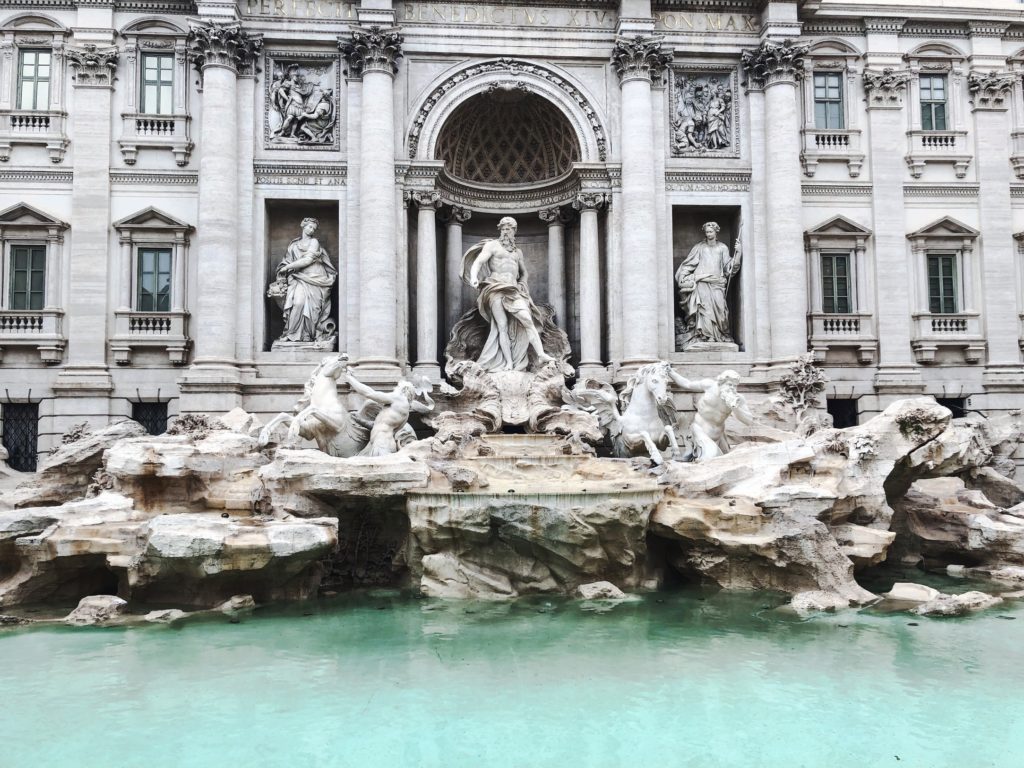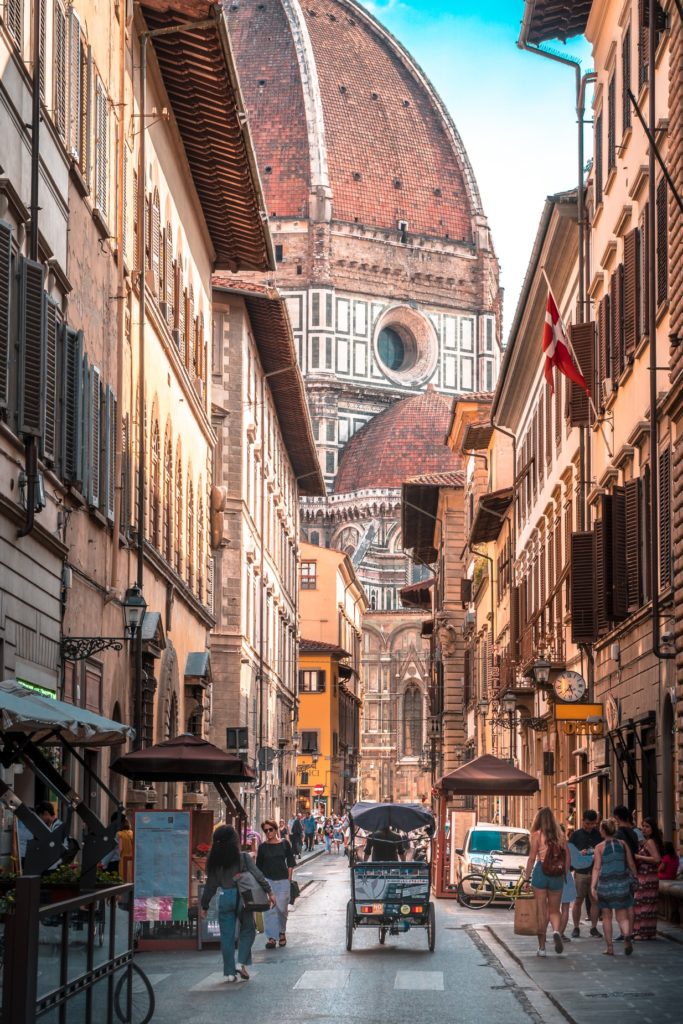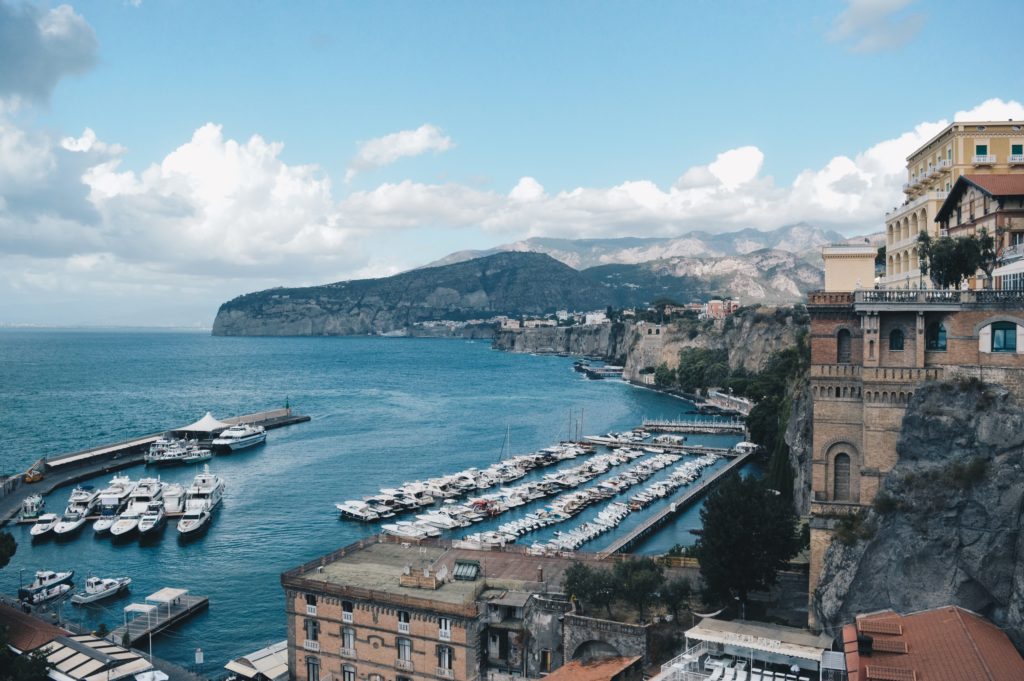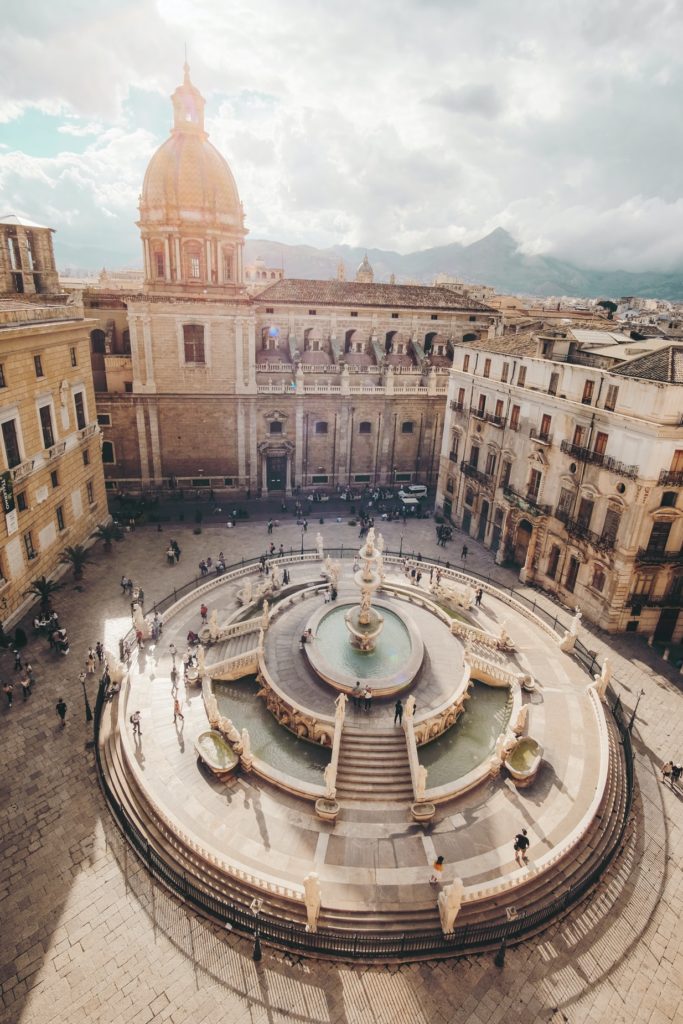Want to go interrailing in Italy? Rory Sullivan takes us through his favourite Italian cities that you need to check out when you’re Interrailing. If you like the sound of these destinations, you can start planning it with this Interrail route template.
With Italian Interrailing destinations, you really are spoilt for choice. Any list of Italian travel recommendations will have at least one glaring omission. This article’s is Venice, but the draw of its lagoon and canals is well-known to you all. In its place are a few less-visited destinations, which are well worth exploring too; along with Rome and Florence.
Rome
You cannot go interrailing in Italy without at least a short stay in the capital. If time is no issue, Rome can occupy you for weeks as you wander around its enchanting historical sites.
Rome, from wolfish beginnings, came to be the world’s most powerful and prosperous city; the core of an empire, which stretched from Spain in the west to Mesopotamia in the east. You get a sense of its wealth, ambition and bustle by strolling, with streams of other visitors, along the lanes of the Roman Forum, up to the Palatine Hill and on to the Colosseum. Another testament to Roman imperialism, situated away from the crowds this time, is the Ara Pacis (the Altar of Peace), which allows the visitor to unpick the propaganda and symbolism of Augustus’ regime.
The heart of the Roman world was appropriated by the newly-formed Italian state. Part of the Capitoline Hill was taken over to build the dazzlingly pompous monument to Victor Emmanuel II. The view from the top is special, but you can do better by heading to the nearby Doria Pamphilj, home to a brilliant art collection.
The Vatican, Keats-Shelley House and the Villa Borghese should also be high on anyone’s bucket list. But if you are looking for quieter spots, it is hard to beat the Basilica di San Clemente al Laterano for its three levels of history – medieval basilica, Roman home and Mithraeum – and the Non-Catholic Cemetery for its tranquillity, basking beneath the Pyramid of Cestius.
Want somewhere to stay when interrailing in Rome? We recommend The Yellow Hostel.

Florence
In 1966, the river Arno burst its banks and devastated Florence, turning it into a second Venice: canals cut through its streets, submerging thousands of precious books and art works. Fortunately, most of its masterpieces survived or were subsequently restored.
Florence is the Renaissance city par excellence. Home to Michelangelo, Da Vinci, Brunelleschi, beauty and art flourished amid factional politics – read The Prince, written by another Florentine, Niccolò Machiavelli, for more details.
Art lovers, spend a morning in the Galleria dell’Accademia gazing at the graceful Statue of David, Michelangelo’s most celebrated sculpture, before heading to the Uffizi Gallery. Few museums in the world can match the Uffizi for the strength of its Renaissance collection.
Next, enjoy the afternoon sun with a gelato. Walk down to the Ponte Vecchio, the only bridge in the city to survive the Second World War, to see its postcard prettiness; laze the sunlight hours away in the Boboli Gardens; or admire the city’s crowning glory, the Duomo, and imagine its effect on 15th century travellers.
Save time to walk up to the Church of San Miniato al Monte: this green and white marble building houses frescoes by Paolo Uccello and an impressive wooden roof.
Want somewhere to stay when interrailing in Florence? We recommend Plus Florence.

Heidi Kaden)
Sorrento
Sorrento is charming, and has fine views over the Gulf of Naples. Interesting in its own right, it is also serves as a great base for day trips to the surrounding region.
In its old town, you can meander through its narrow, colourful streets on your way to the religious complex of San Francesco, the venue for summer concerts.
Other possibilities are to while away a few hours in the cafes of the Piazza Tasso (writing in your Interrail travel journal?) and to sample the refreshing product of the region, Limoncello.
Sorrento’s location could not be better for the day-tripper. Pompeii, and its destroyer, Mount Vesuvius, can be visited easily. So can another Roman town devastated by the same volcanic ash in the summer of 79 AD and in many ways more interesting than Pompeii: Herculaneum.
Two other recommendations are the boat ride over to the island of Capri, where the Emperor Tiberius lived in self-imposed exile, and the journey down the Amalfi coast to the Greek temples of Paestum.

Trieste
Trieste has had a turbulent history since 1918, when it was first annexed by Italy from the Habsburg Empire. The Germans snatched it in World War II and mercilessly executed and deported its Jewish population. After two contingents of soldiers – one from New Zealand, the other under Tito of Yugoslavia – had liberated it, the city became a free territory until it was assigned to Italy in 1954.
This port city, located beneath the inhospitable Karst plateau, was once immensely important. As the main Austrian port, it was the Habsburg’s gateway to worldwide trade. It flourished as a result, and still abounds, despite the city’s decline over the years, with imperial monuments and statues.
The Museo Revoltella, set inside a 19th century palazzo and complete with a modern art collection, typifies Trieste’s sea-born opulence. Likewise, the Archduke Maximilian’s Miramare Castle, positioned on a promontory, attests to this city’s former riches. And the citadel displays its Roman past.
As the HQ of Illy’s, Trieste also has some of Italy’s best coffee. Sit in one of its long-standing cafes, and reflect on the city that inspired (along with Dublin) the writings of James Joyce.
Palermo
Any potential Interrailer should not exclude Sicily from their proposed itinerary. It may be an island, but there’s a regular train service connecting it to the mainland. Greek temples, Roman amphitheatres, Norman cathedrals and natural wonders like Mount Etna hold the tourist in awe.
Palermo, Sicily’s capital, is no exception. The Palermo Cathedral began its life in 1185 as the project of Walter Ophamil, the city’s Anglo-Norman Archbishop. Corner towers and an early Renaissance porch were later added, before the church received a neo-Classical make-over between 1781 and 1801. Even more impressive is the Palazzo dei Normanni (Palace of the Normans), the oldest royal residence in Europe. In particular, you must see the Palatine Chapel and marvel at its hybrid Arab-Norman-Byzantine style.
Before heading out to the beaches, the perfect spot to read the best Sicilian novel, Giuseppe di Lampedusa’s The Leopard, go to the Capuchin catacombs. If you dare to enter, your head will spin from its macabre four-hundred year history.
